After surprising everyone in what was their first-ever major international tournament at Euro 2017. Semi-finalists Austria will be coming to England as a team no one will enjoy facing.
As we approach the pre-tournament-friendly matches, the Austrians will be in a jovial, confident mood. They have won their last five fixtures, scoring 28 goals and conceding just three in the process. Although some of those matches will be judged to have been played against weaker opposition, Head Coach Irene Fuhrmann will surely feel this is a good platform to continue from.
Tactically, Fuhrmann is adaptable and flexible with her approach. Over the last calendar year, she has favoured an expansive 4-3-3 but has shown previously that she is not afraid of change and has opted for 4-1-4-1, 3-5-2 and 5-3-2 formations during her tenure.
This tactical analysis will provide an in-depth look at Austria’s tactics and how they plan to repeat their performance from 2017. We will provide data analysis on their attacking threat, and their defensive strategy, along with reviewing which players are likely to influence their tournament.
Predicted Starting XI

Austria favour a 4-3-3 set-up during their matches. This setup allows Irene Fuhrmann the flexibility to switch between maintaining a solid defensive shape and a fluid attacking shape.
Above is our prediction for the starting XI that Irene Fuhrmann will go into this tournament with. There will be no surprise in goal as Manuela Zinsberger has just finished one of the best seasons of her career with Arsenal. She has always been a good shot-stopper and after watching her games for Austria in the qualifying stages, she is getting better with the ball at her feet.
The full-back positions pick themselves, as Verena Hanshaw and Laura Wienrother are ideal for how Austria utilise these positions within their approach. Hanshaw is good at getting forward and providing width down the left-hand side and Wienrother offers good versatility.
She will sit inside and join the centre backs making a back three as Austria switches shape during the attacking phase. She will provide a good defensive balance to the opposite full-back who will look to support the attack more.
In midfield, Austria have several options to choose from and Irene Fuhrmann will likely choose the players that offer the most balance specific to the team they are playing against at that point. Three players are guaranteed to start — Sarah Puntigams, Barbara Dunst and Sarah Zadrazil. Puntigams’ role is important as she provides the link between the defence and attack, while her positioning is pivotal to how the team transitions between both phases of play. Dunst’s movement in the attacking third is crucial, as she moves centrally to support the striker and provides a goal threat. Finally, Sarah Zadrazil has good defensive and attacking instincts along with good energy as she supports the play from box to box.
Although we have opted for Marie Hobinger and Katharina Naschenweng, they are the players most likely to change depending on how Irene Fuhrmann wants the team to impose themselves on the opposition in the attacking third. Julia Hickelsberger and Laura Feiersinger could feature in the starting XI.
Austria have a good age range within their possible squad selection for this championship. The chart below shows they have a good number of players in their prime years, along with a nice blend of experience and youth.
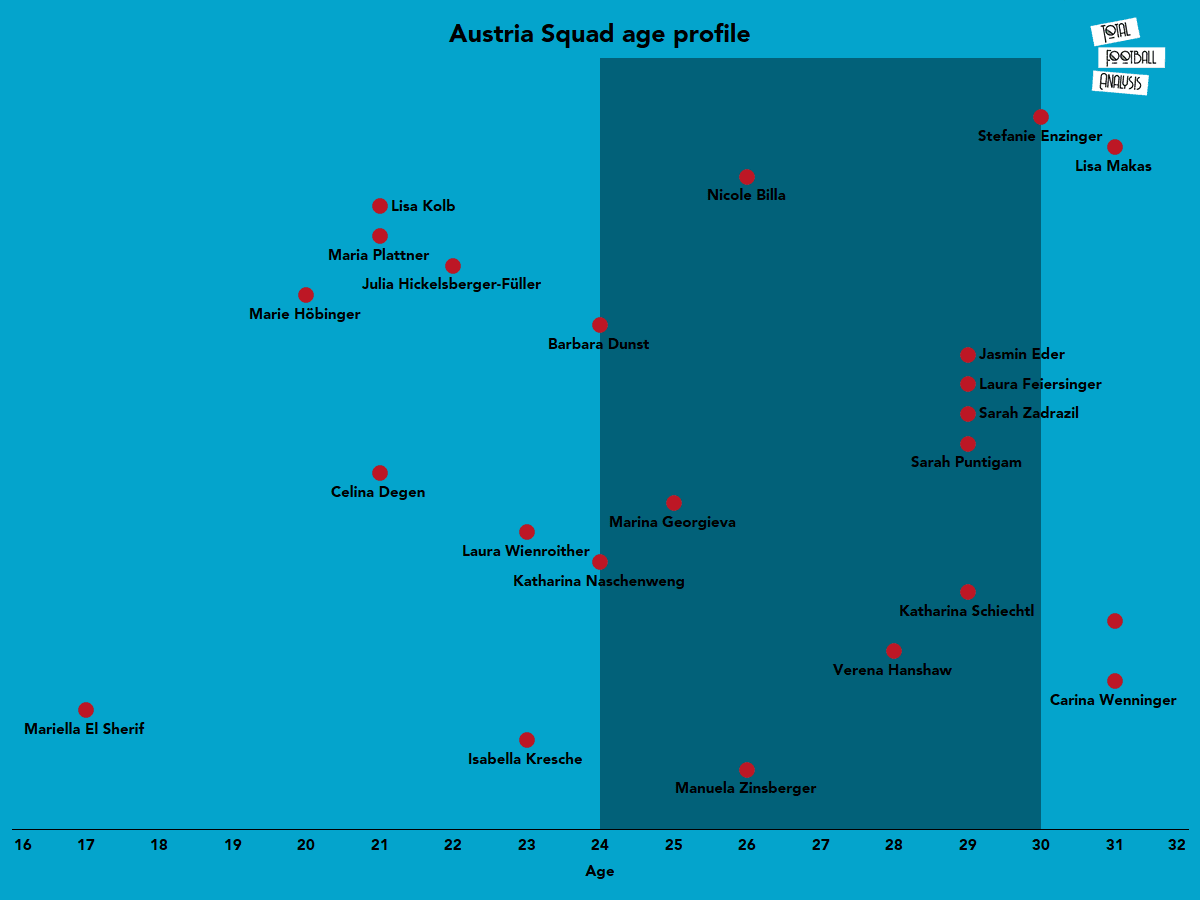
Attacking Phase
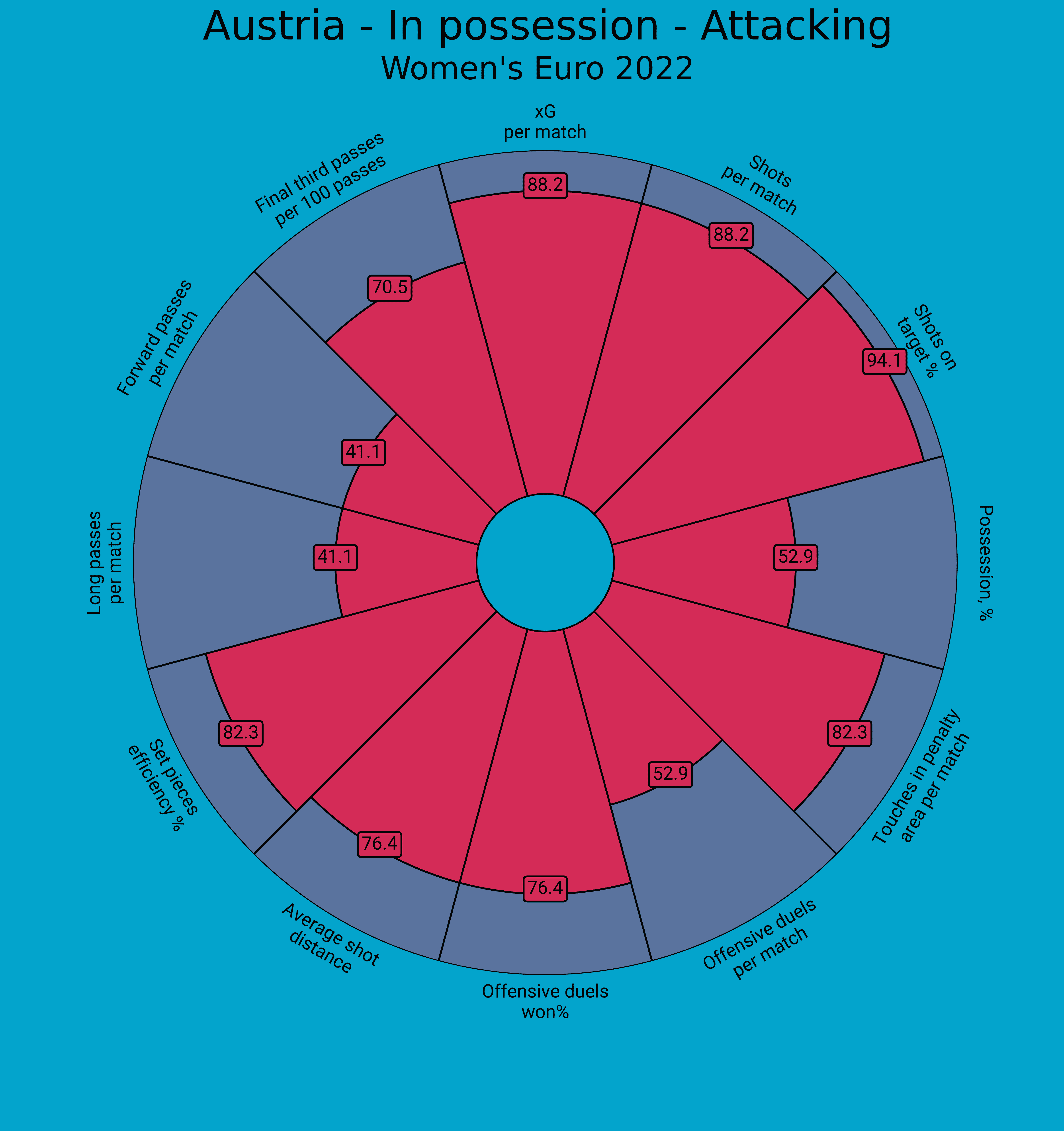
Under Irene Fuhrmann, Austria have developed a vertical-based possession game. They enjoy playing out from the back and look to play progressively through each third of the pitch.
The metrics tell us they keep possession at a relatively average amount but they impressively rank quite high for passes made into the final third. As they play just as many long passes as they do short passes, this would suggest their possession is purposeful and not retentive.
When they build up from the goalkeeper, the goalkeeper will preferably look to play through the centre-backs. The shape they build up with from the defensive third will change depending on the formation of their opponents. The image below shows how Irene Fuhrmann wants Austria to play when they are playing out through defence against a 4-3-3 or an equivalent formation with a lone centre forward. You can see how the fullbacks are positioned higher than their defensive line. The defensive midfielder will drop into the central space in front of the centre-backs to provide an option to progress the play centrally and then the full-backs will continue to push higher and support the attacking third.
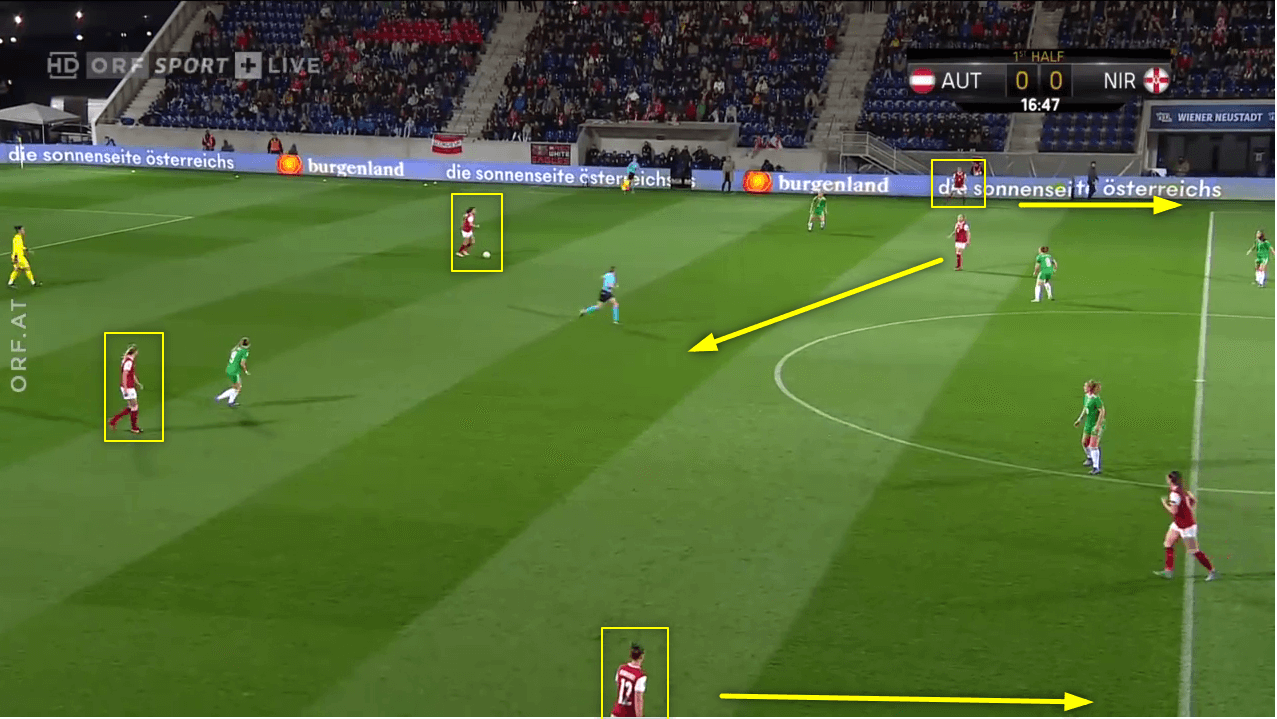
Compare this to the build-up structure they use when playing against a team that plays with two centre forwards. The difference is that they only instruct one full-back to push further forward when playing this way. In this instance, the right full-back has come inside to sit narrow, and the central defenders have moved across and have formed a back three from which to build up. This maintains they keep a numerical advantage and allows them good progression opportunities.
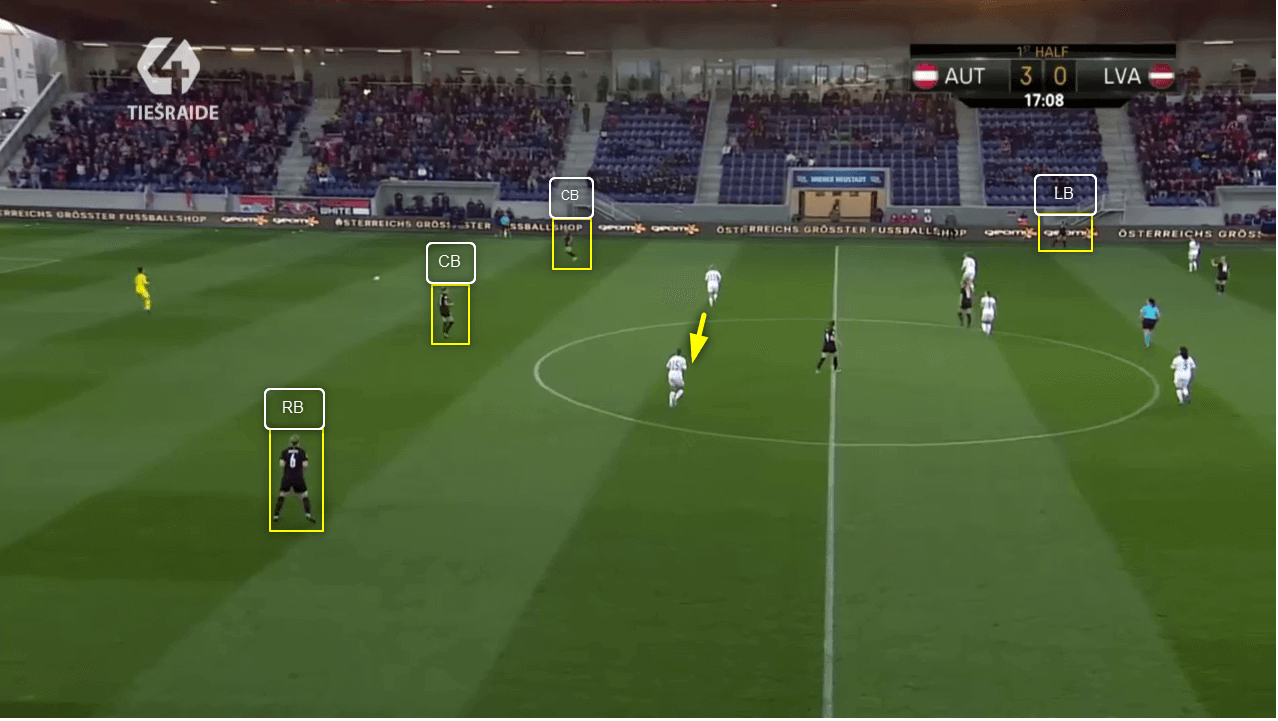
Once the play progresses and the teams enter the creative stage of play, their attacking shape will transition between a 3-1-6 and a 3-2-5. Although a 3-2-5 is preferred as it will give them greater central control. This is where Irene Fuhrmann has shown flexibility with her approach and coaching methods. As Austria can and will switch between both attacking shapes in the same match, depending on the situation. Fuhrmann has made them unpredictable in that regard.
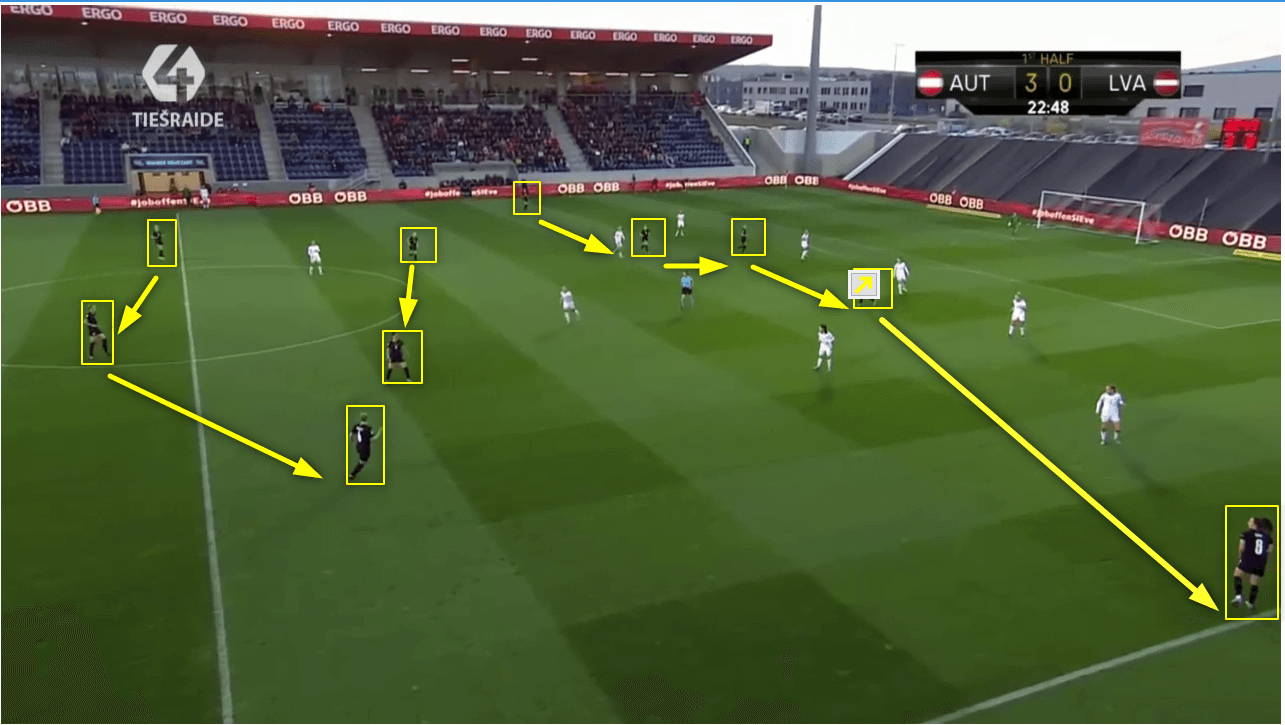
The below image shows a 3-1-6 shape but could still be considered a 3-2-5 approach, the difference being the centre midfielder is pushing further forward in this game. This shows
Austria’s flexibility is not just within their shape but within their players. The players provide good movement which helps determine how they penetrate the opposition defence. This image shows the midfielder joining the attacking line and the image above shows the midfielder holding her position to create a double pivot.
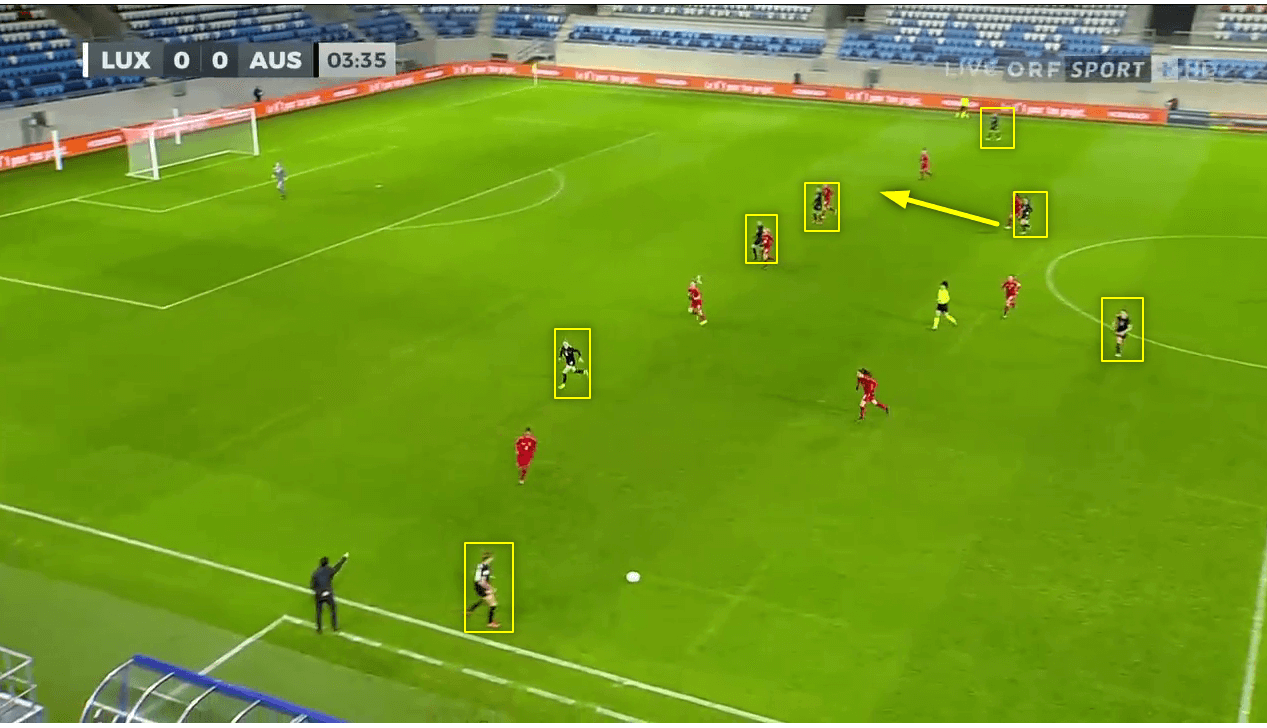
From a positional perspective, you can see how Austria want to attack. Every zone has a player occupying it when they approach the attacking third. This ensures the team has an attacking threat right across the pitch as they progress forward and overload the opposition’s penalty area. Getting players into the penalty area and its surrounding area is vital for Austria’s pass-and-move approach, and something the 3-2-5 attacking shape encourages.
If Austria are attacking in their desired shape, they will have four players in both half-spaces and the central corridor. The players occupying the wide channels are the players that enable Austria to stretch the opposition and create space to exploit. These players are fundamental to the system, as Austria enjoys overloading the wide areas.
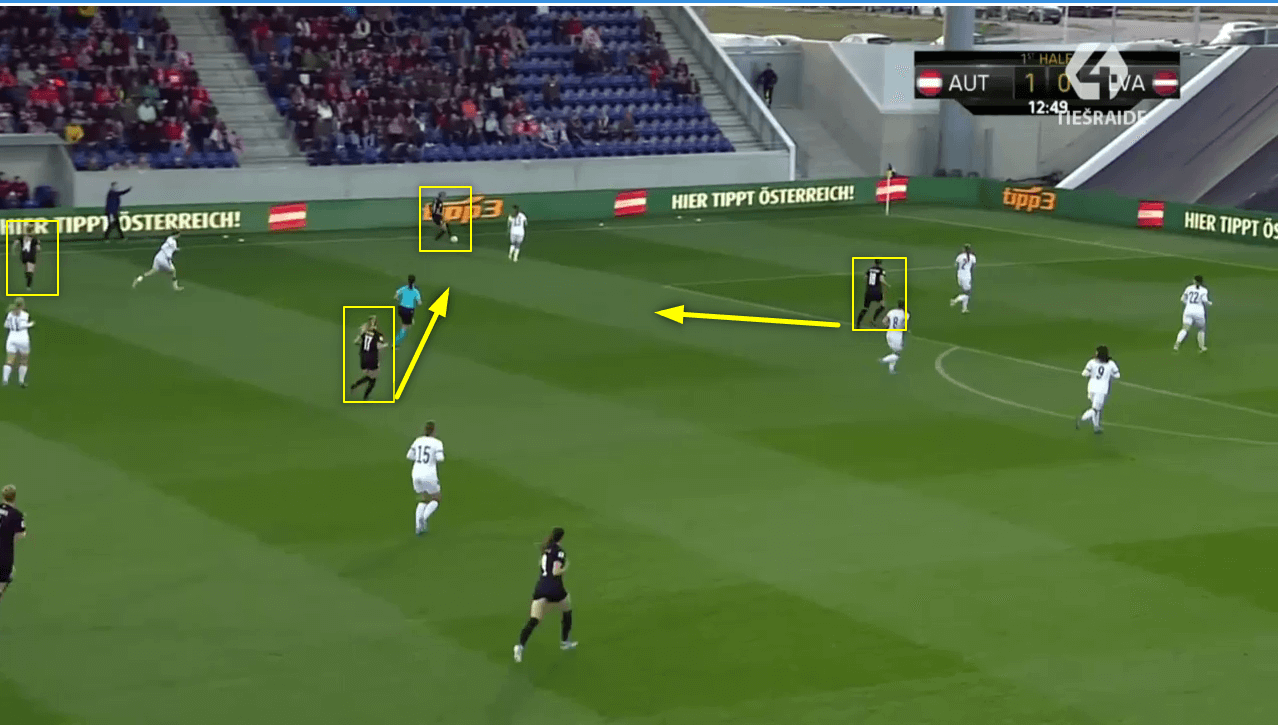
Defensive Phase
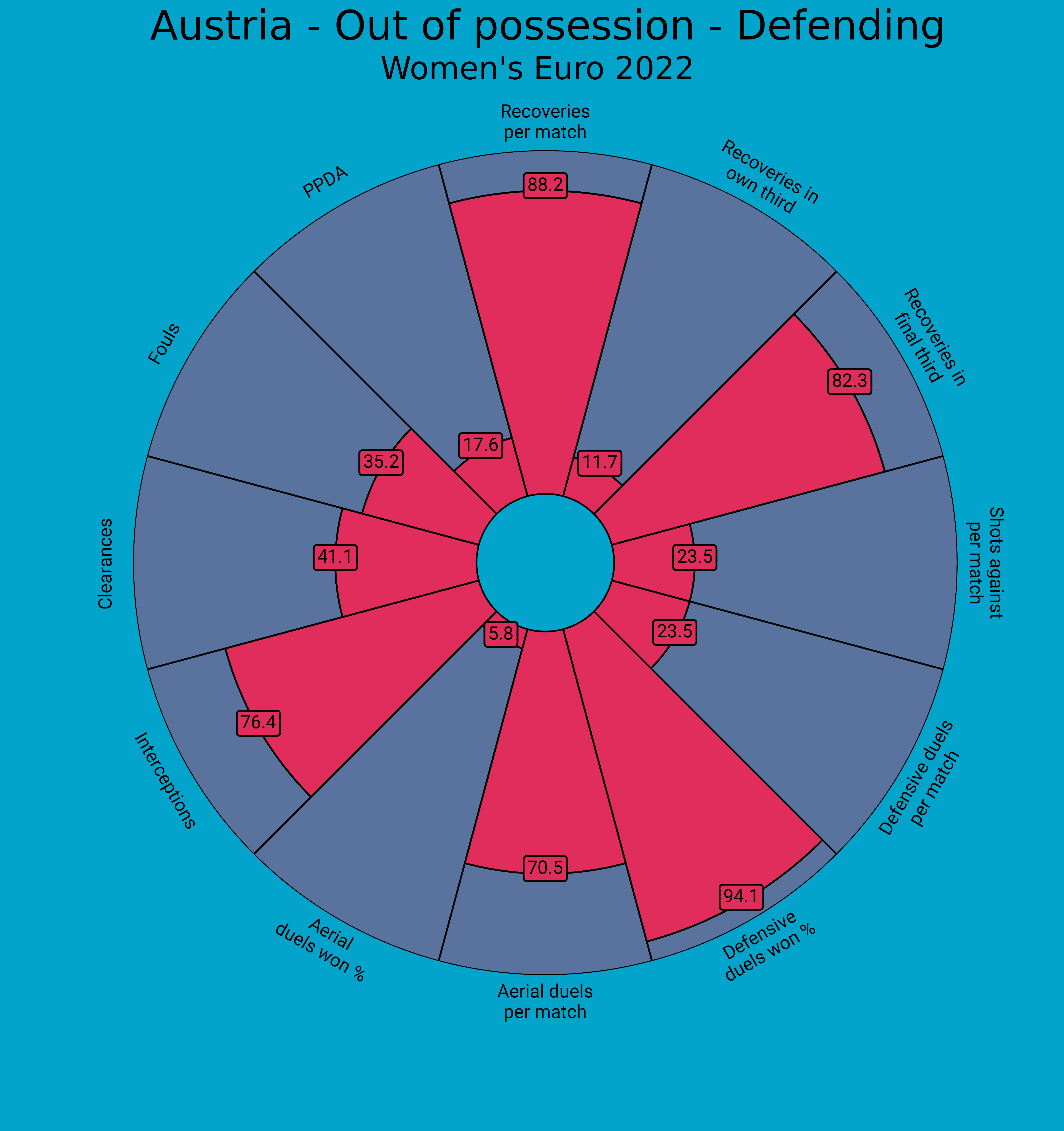
Defensively, Austria sits in a strong 4-1-4-1 shape. Fuhrmann has built a side that defends with intensity, and who works hard individually and collectively as a team. Overall, they have a very good work ethic. Out of possession, they press individually and positionally as the rest of the players hold their shape. When each player presses against the ball, they are not aggressive in their pursuit of the ball. They aim to block the space and the passing lanes off, to stop the opposition from progressing the play and therefore making them difficult to play through. This principle applies right through each third of the pitch.
When compared to the other national teams in the qualifying stages Austria’s defensive work proved effective.
When they are defending their defensive third and penalty area, the defensive shape moves into a 4-5-1 as the midfield look to close any gaps between the lines.
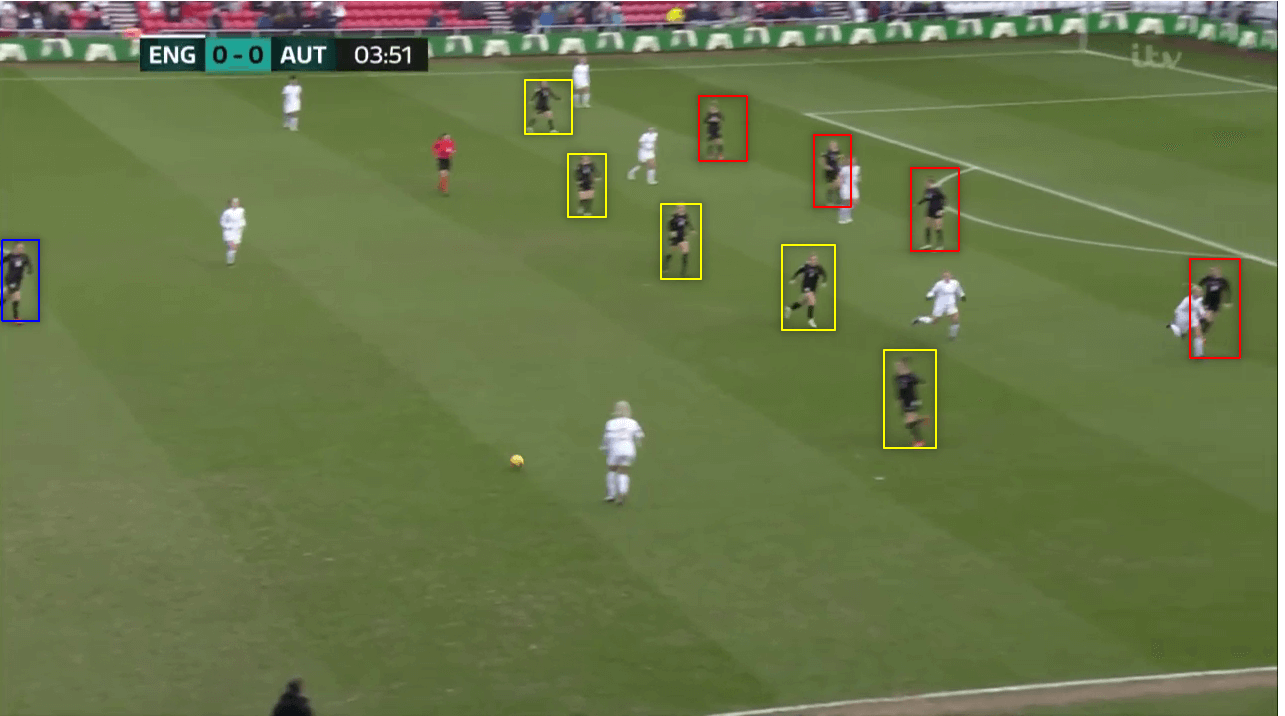
As they hold their shape higher on the pitch, they still press individually but the team sits narrower as they want to compress the space and push the opposition down one side. This happens once the opposition progresses their play through to the middle third of the pitch.
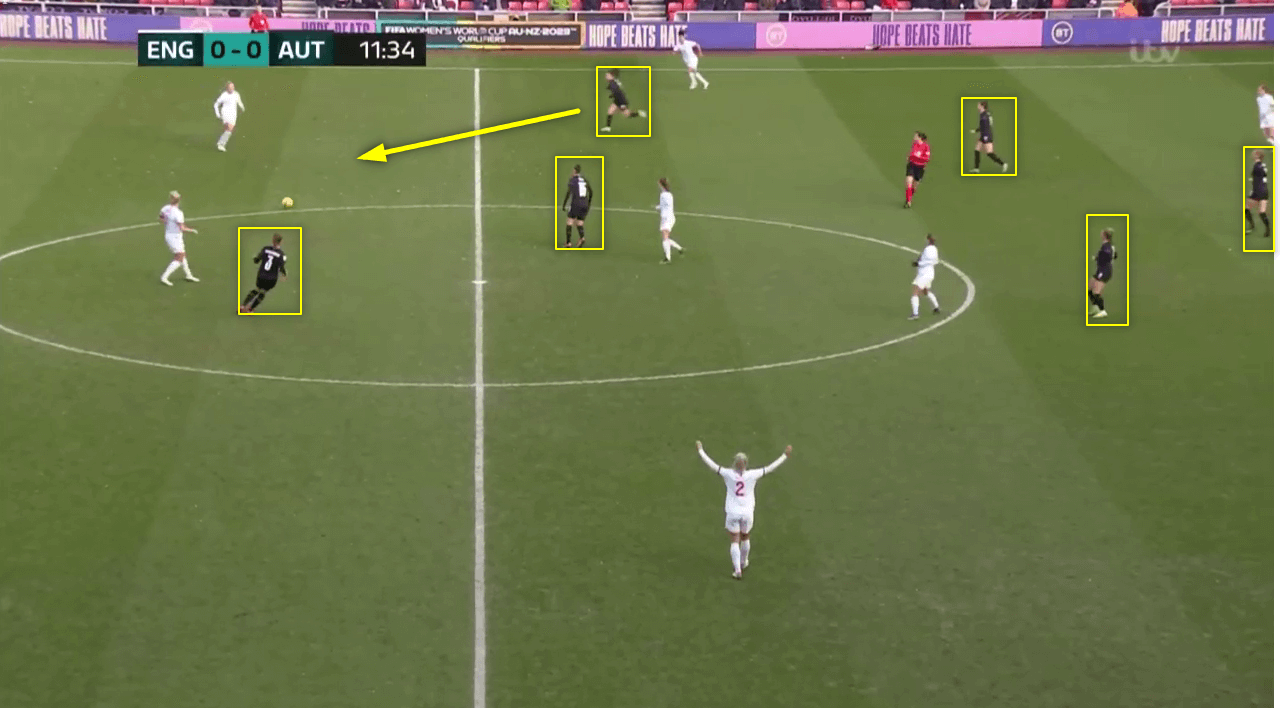
Although Austria don’t counter press the opposition, they still look to press the opposition high up the pitch. The pressing trigger is not set to force the other team down a specific area such as the wings, rather their general plan is to force them backwards and away from their goal.
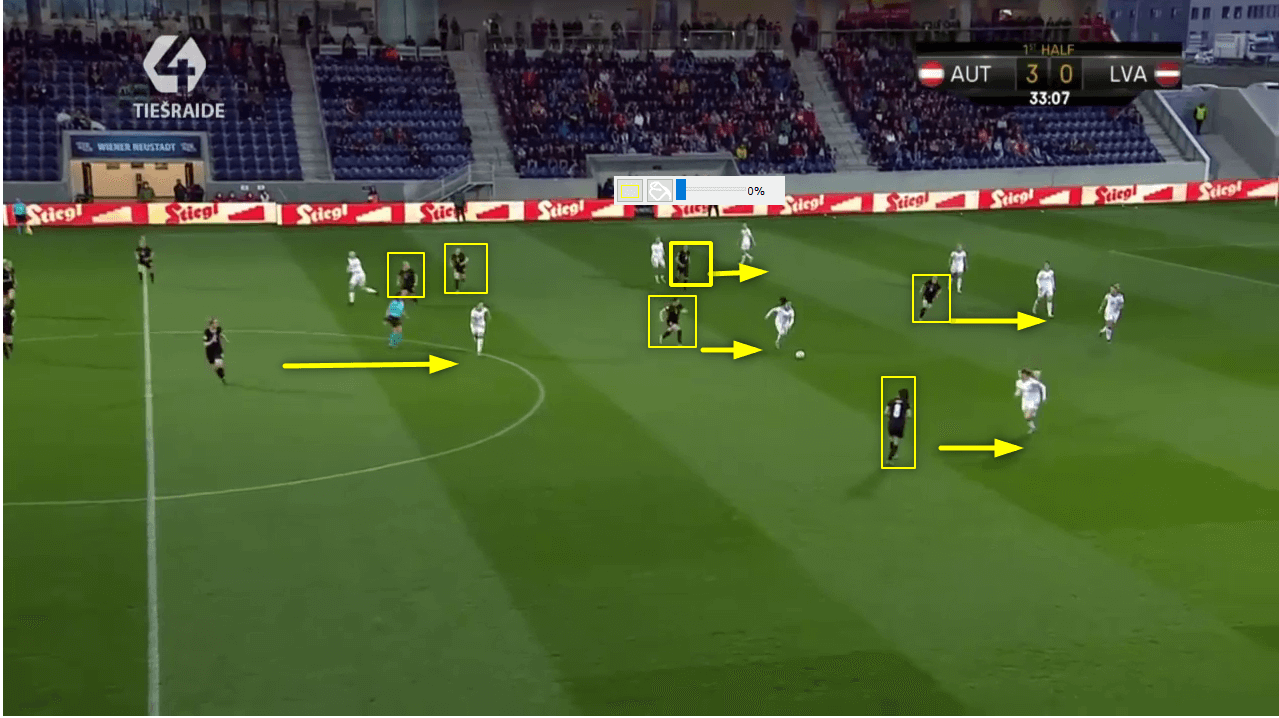
Irene Fuhrmann will adapt the team’s defensive structure depending on the quality of the opposition. However, the same principles will always apply.
Their high number of interceptions shows the team’s anticipation is good and averaging so many recoveries in the final third shows the opposition has difficulty playing through them without conceding possession, with Austria focusing a lot on winning the ball high. They don’t make so many recoveries in their own third, again, as a result of the fact that they generally like to engage the opposition higher.
Transition
Part of the strategy behind a 3-1-6 or a 3-2-5 attacking shape is to account for how a team performs in transitional phases of play. The 3-1 and 3-2 structures prepare the team for defensive transition as it keeps the players involved behind the ball. The six or five other outfield players are responsible for the transition from defence to attack.
This suits Austria. Although they do not necessarily always look to win the ball back quickly during the defensive phase, when they do, they look to transition to attack with quick and vertical play.
In this image, they intercept the play in midfield as Latvia struggle to play through them. Four players immediately start to attack and they make straight for the space down the right flank leading to the play getting cleared from a cross.
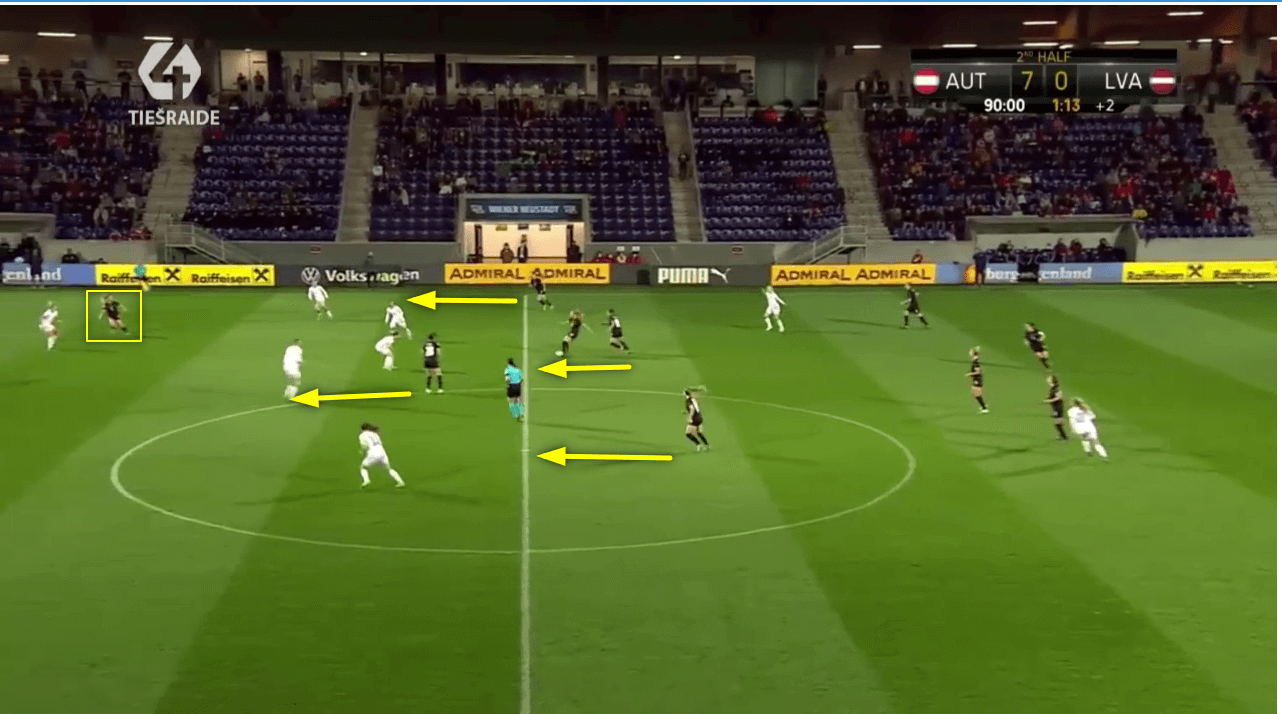
The cross gets cleared straight back to Austria, who are then presented with the scenario below. The image shows how Austria now has four players ahead of the ball carrier with two more about to join them. Within seven seconds, Austria intercepted the play in their half, had one attack cleared and are now attacking Latvia’s penalty area with seven players — including the person in possession.
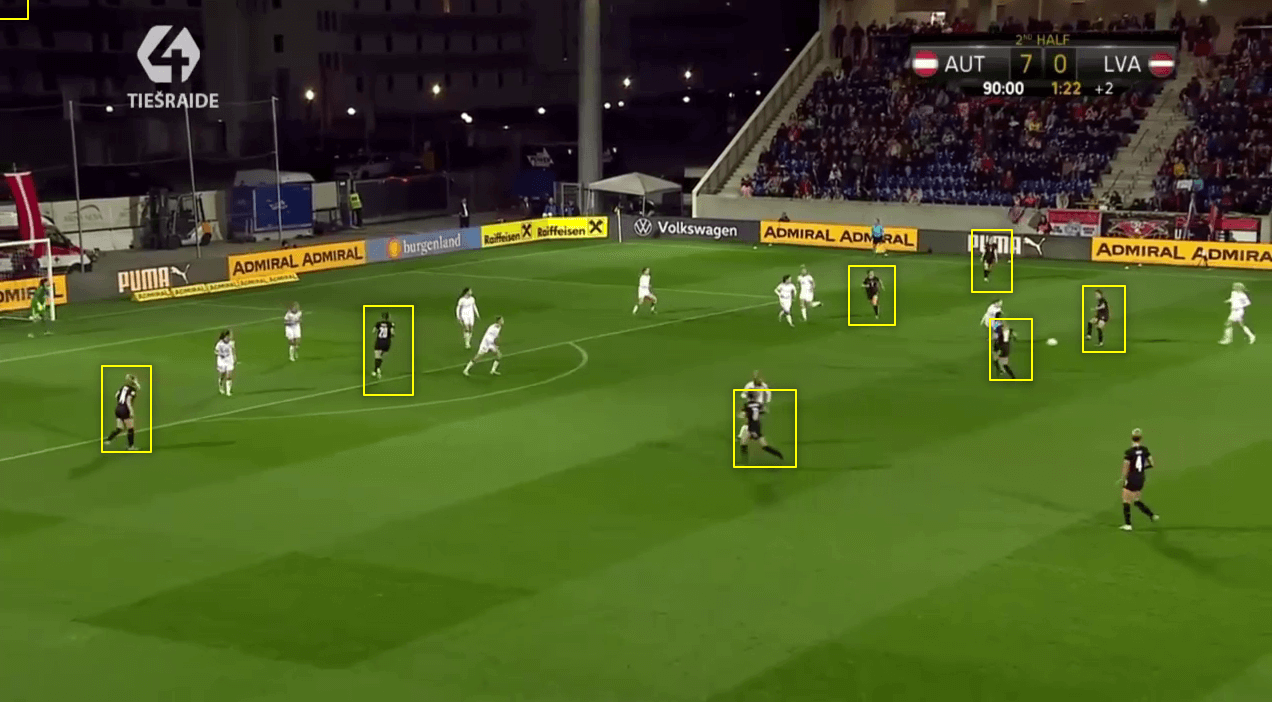
Here, you can see the 3-1 defensive structure as Austria lose possession and transition from attack to defence. Naturally, you see the team shift over to the ball side and attempt to close down the ball carrier. What’s key in this transition is the player sitting in front of the three defenders and the movement she makes. The player who performs this role during this set-up does not look to close down the woman in possession; she moves across and blocks the space in front of the ball carrier to stop her from being able to progress the ball directly. This tends to slow down the opposition’s counterattack.
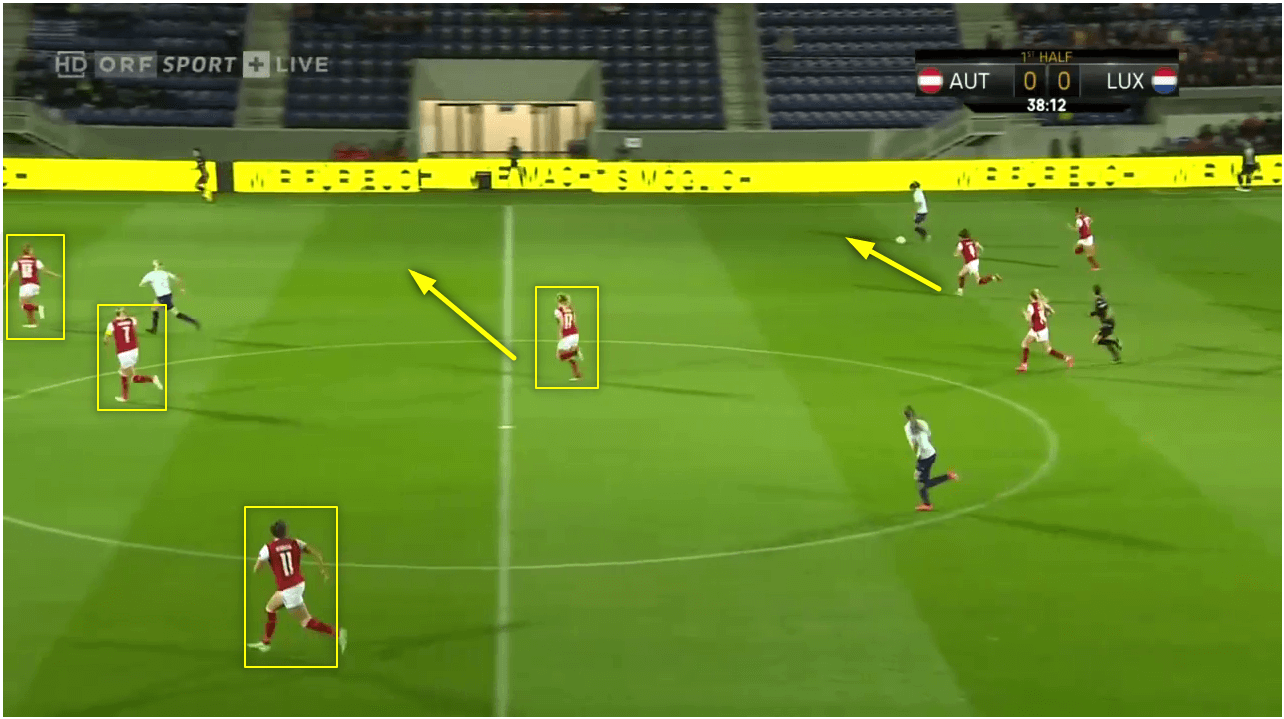
Sometimes when Austria attacks in a certain pattern, it can lead to them being vulnerable during their defensive transition. This occurs when both fullbacks push higher up the pitch at the same time. You end up in a situation like the one in this image. Instead of having that 3-2 or 3-1 defensive structure, Austria have left themselves with only three players behind the ball — both central defenders and the holding midfielder sitting in front. You can see how Northern Ireland have developed a 3v2 counterattack and have lots of space to attack on the outside.
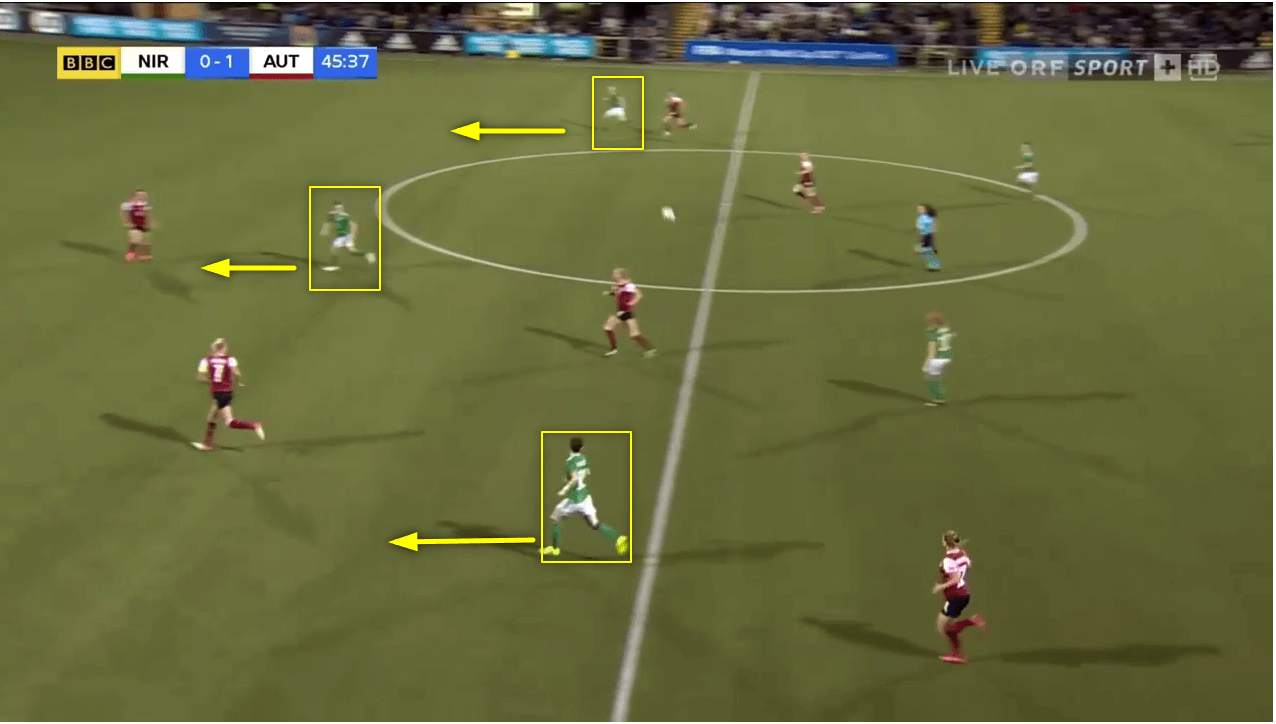
Defence
As well as the experience each of Austria’s defenders has between them, another important factor will be how well they play when they pass out from their defence.
They play with a lot of verticality in their passing as they want to play through each third of the pitch. To assist this, the central defenders are required to have good passing accuracy with the awareness to be able to play the ball forward. Marina Georgieva completes 18.2 forward passes per 90 minutes with a success rate of 62.7%. Carina Wenninger completes 31.74 forward passes per 90 minutes with a success rate of 83.58% and Viktoria Schnaderbeck completes 18.47 forward passes per 90 and achieves a success rate of 70.4%. All three have shown the capability to match what the manager’s tactical approach requires.
Irene Fuhrmann will likely opt for two out of these three as her centre-back pairing with Laura Wienrother tucking in from the right-hand side to allow that transition to a 3-1-6 shape.
Midfield
The centre of midfield will be Sarah Punitigam, Sarah Zadrazil and one other. Puntigam and Zadrazil provide the perfect balance for the team to switch between the 4-1-4-1 defensive shape and the 3-1-6 attacking shape. As well as the other player playing alongside them, how well the midfield controls the space out of possession and how well they control the play whilst being in possession will play a key role in how well Austria plays at this tournament.
Forwards
Nicole Billa will play as the focal point for Austria’s attacking play in the final third. The Hoffenheim centre-forward is effective at linking the play between her and midfield. This is essential for Austria’s fluidity when they look to get players forward. As well as being prolific once she enters the penalty area, her ability to bring others and create chances for her teammates is impressive. She has a 65% pass completion rate as well as completing 2.42 passes into the penalty area per 90. Which is well above average.
Barbara Dunst is the one player that is almost certain to play in the wide areas and be looking for support to Billa. Fuhrmann has used Dunst on both wings at different stages but it’s when she plays on the right that Austria looks more balanced in the attacking third. During the qualifying stage, she scored four goals which put her as the second-highest goal scorer for Austria behind Billa.
Best Performer
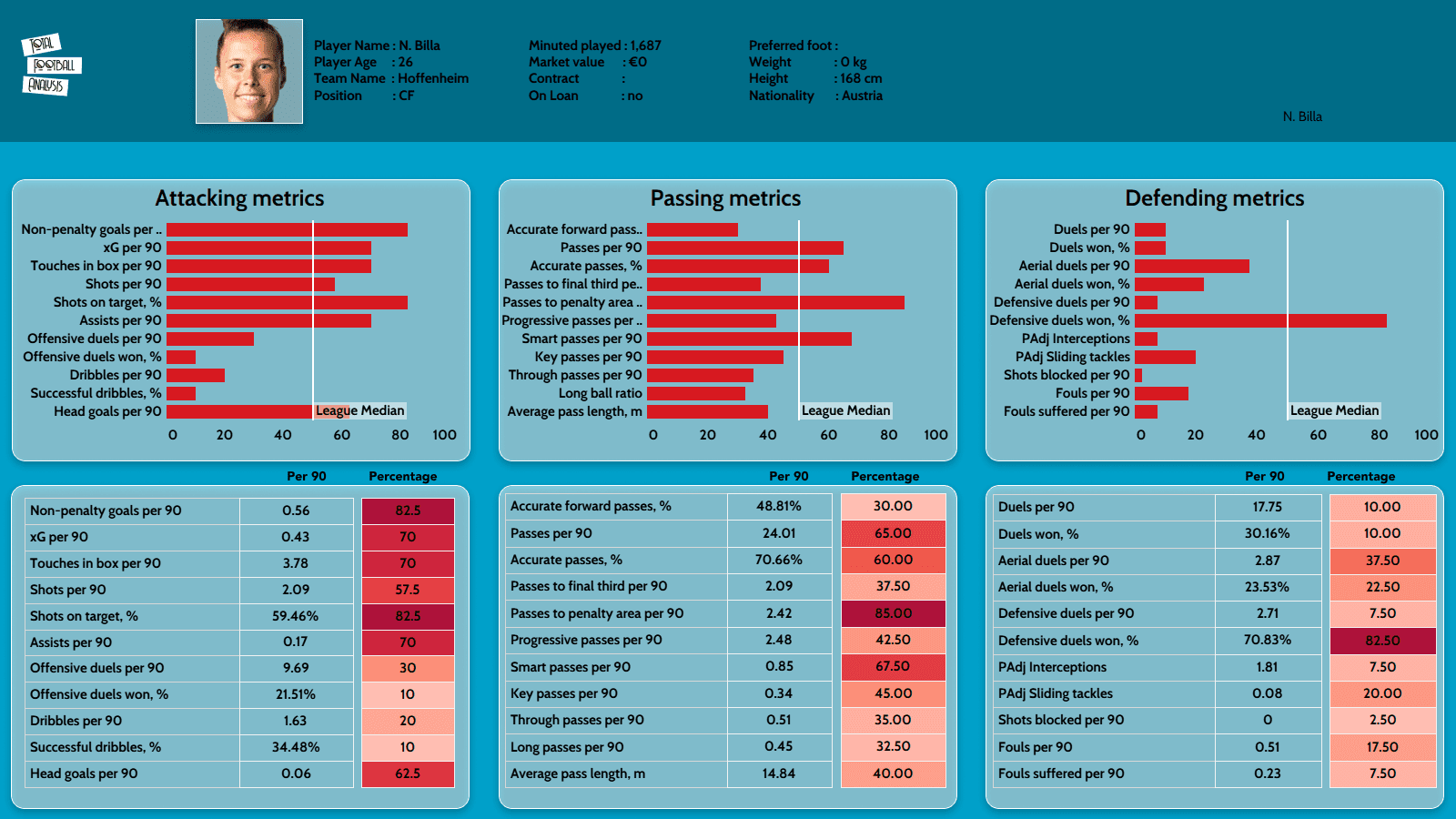
Austria’s player to watch and the most important player will be Nicole Billa. The 2021 Austrian Women’s player of the year scored 22 goals and got 7 assists in all competitions this season. Billa is a striker who is excellent at anticipating the play, offers a lot of composure in the attacking third and plays a pivotal part in Austria’s efficiency in the attacking third.
The Hoffenheim striker’s attacking metrics, as indicated in the image breaking down her domestic performances for the last calendar year and comparing her statistics in each noted area with the league median, will bring even more confidence to her manager. Billa averaged 0.56 non-penalty goals per 90 minutes this season and boasts a great percentile ranking for shots on target per 90.
Overall, she brings a genuine quality and will be a nuisance to any opposition she plays against. Her expected goal per 90 is 0.43 which when compared to her goal record of 0.56 per 90 shows she is clinical and generally scores the opportunities she should. Given that Austria enjoys attacking down the channels and crossing the ball, she provides an attacking threat in the air as she performs above average in scoring headed goals.
Tournament Prediction
The bar has been set high for them after they reached the semi-finals on their debut in 2017 but repeating the same success will prove very difficult.
Austria have been drawn into a very tough group. Being drawn against the favourites, England, and a team that many are predicting as dark horses, Norway, would suggest getting through the group stage will be a good achievement for this group of players. If they are successful in achieving that, they have been drawn on the same side of the draw as both Germany and Spain — another tall order.
However, being the underdogs could prove to be positive for Irene Fuhrmann and her team. They can look to impose their style of play and play with less pressure.

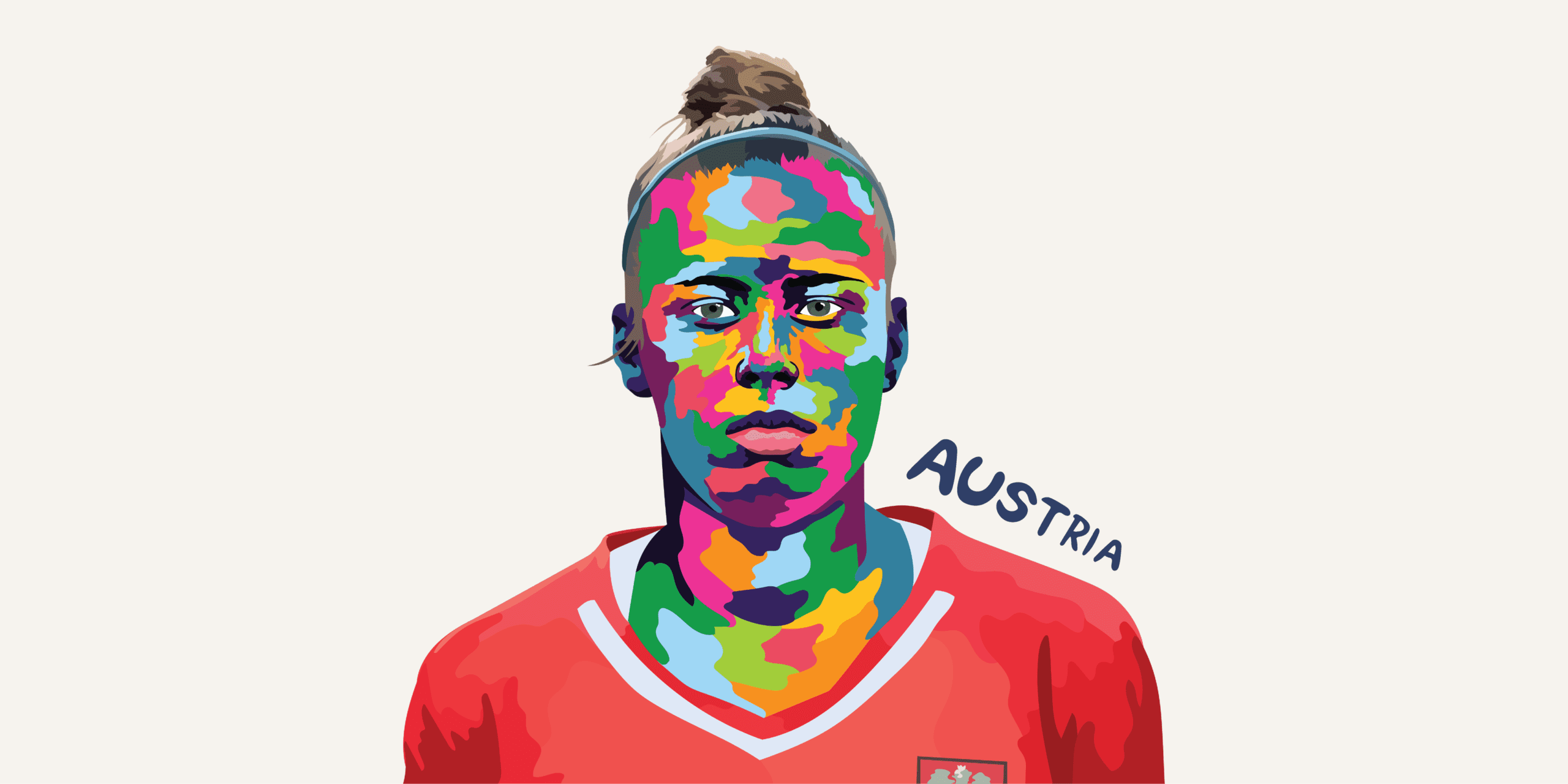



Comments